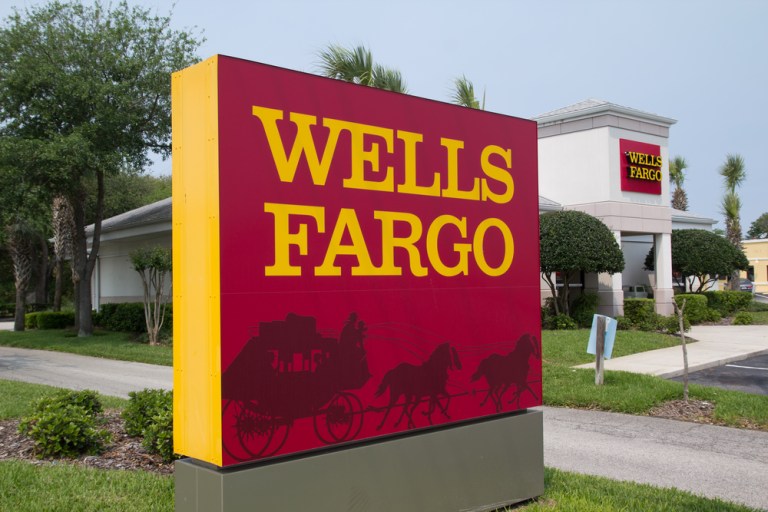Wells Fargo’s Q2 Disappoints After Scandals

Wells Fargo, which is working to recover from a series of regulatory scandals that have impacted trust with customers, reported lower than expected earnings and revenue during the second quarter, as mortgage banking income and other sectors showed softness.
Wells Fargo officials are working to transform the bank digitally and continue overall cost reductions as it works to regain trust of customers and faces emerging headwinds that are impacting the larger economic picture. The performance fell short of Wall Street estimates, as analysts surveyed by Thomson Reuters had been expecting $1.12 per share, while earnings came in at 98 cents. The current quarter included a 10-cent per share income tax expense.
Officials said non-interest income was down $684 million from the first quarter of 2018, to about $9 billion in the second quarter, citing lower mortgage banking fees and other income. Revenue fell to $21.6 billion for the quarter, compared with $22.2 billion in the year-ago period.
Second-quarter net income was impacted by a $481 million one-time expense resulting from a key Supreme Court decision related to online sales, South Dakota v. Wayfair, which impacted how states may collect taxes on sales made by out-of-state sellers.
Wells Fargo officials noted that total loans were down $6.9 billion from the first quarter to $944 billion, including a $2.5 billion drop in commercial real estate loans from the prior quarter. This was partially offset by a $1.9 billion gain in commercial and industrial loans and a $321 million increase in lease financing loans. The lender said consumer loans were down $2.8 billion from the first quarter, noting a $1.9 billion decline in auto loans due to expected continued runoff.
The San Francisco-based bank had a total of 5,751 retail branches by the end of the second quarter, citing 114 branch consolidations during the first half. Wells Fargo also announced plans to sell 52 branches in Indiana, Ohio, Michigan and parts of Wisconsin to Flagstar Bancorp. The bank reported 5,977 retail branches in the year-ago quarter. Officials said Wells Fargo is on track to reach its previously announced goal of $4 billion in expense reductions by next year.
The bank has been in recovery mode in recent months, as federal regulators launched a series of investigations into consumer and commercial practices at the lender.
Wells Fargo President and CEO Tim Sloan acknowledged that the bank is working to turn around its reputation by making transformational changes within the company.
“Our goal is not only to meet but exceed regulatory expectations, so that we have the best risk management in the industry,” he said during a morning conference call with analysts, adding that the bank has done a good job in managing risk in certain areas. “However, we have to do manage our other risks, such as compliance and operational risk.” Sloan also said that foreign exchange and trust businesses remain concerns for the bank.
Sloan noted that the bank is also committed to improving the customer service experience by using technology to give customers more control over their accounts.
The bank’s problems began two years ago, when investigations revealed that Wells Fargo opened about 2.1 million fake accounts, initiated by employees trying to meet internal sales targets.
Those accounts were often created without the consent or knowledge of customers. After the investigations began another 1.4 million fake accounts were uncovered and the bank was forced to make major internal changes to regain trust of its customers.
Earlier this year, the bank was rocked by another scandal involving its wealth management business, opening up another round of inquiry by federal regulators.
Still, Wells Fargo executives expressed optimism that the bank is moving in the right direction, and is bullish on some of its new products, including the no-fee Propel rewards card, which the bank touts as one of the most generous in the industry with its triple rewards.
In May, the bank announced plans to test a new mobile pay enhancement called Pay with Wells Fargo, which allows customers to select their most commonly used transaction methods before having to sign in.
The bank reported 28.9 million active digital customers, which include mobile and online, a 4 percent increase from a year ago and slightly above first-quarter figures of 28.8 million. Mobile active customers rose 8 percent from a year ago to 22 million, a 1 percent gain from the first quarter of 2018.
Teller and ATM transactions were down 5 percent in the second quarter from a year ago to 351.4 million, a figure that was up 2 percent from the first quarter based on seasonality.
In June, the bank launched a pilot of Control Tower, an application that helps customers control where their digital account information is shared online.
Sloan said the company’s Zero Balance Alerts application, which tells customers when their account balance falls into the negative, is now sending out an average of 30 million alerts per month after launching in 2017.